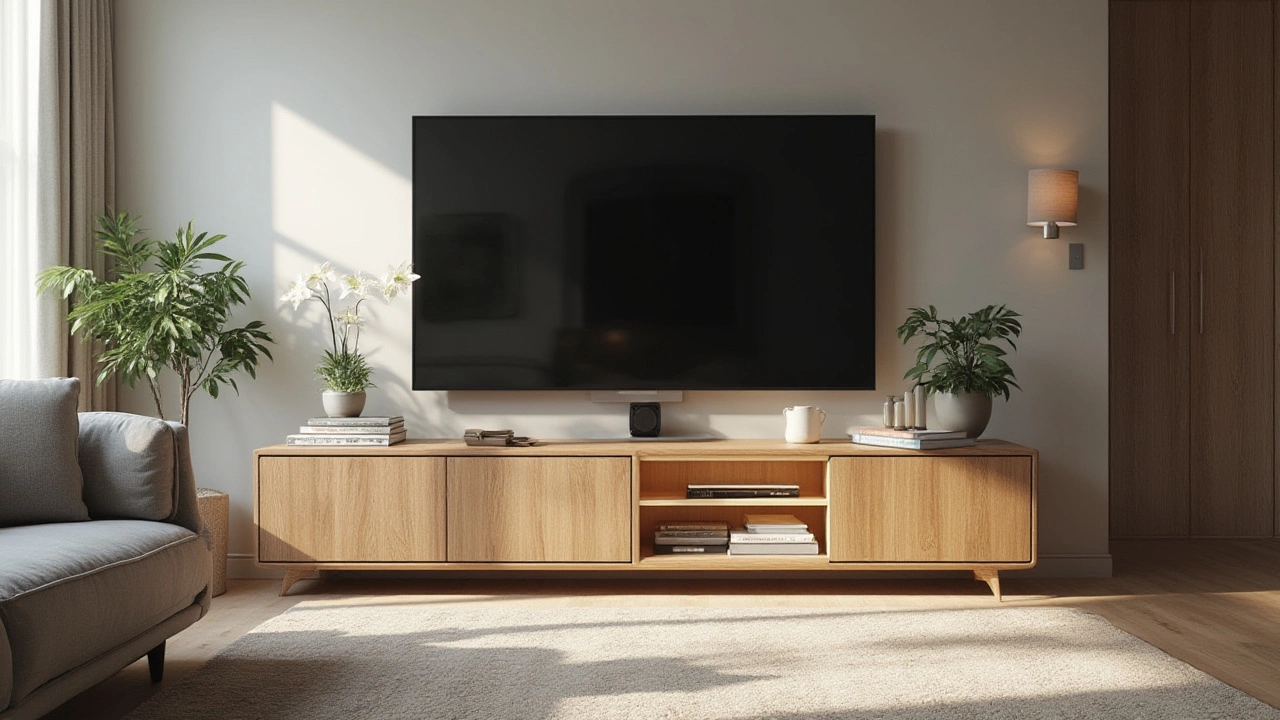TV Setup Tips: How to Get the Best Picture and Comfort
Putting a new TV in your living room can feel like a big project, but it doesn’t have to be. The goal is simple: you want a clear picture, a comfortable seat, and a setup that stays safe for years. Below you’ll find easy steps that cover where to put the screen, how far back to sit, and which stand or mount works best.
Choose the Right Viewing Distance
First, figure out how far the sofa should sit from the screen. A quick rule of thumb is to multiply the TV’s diagonal size by 1.5 to 2.5. For a 55‑inch TV, that means sitting about 7 to 11 feet away. If you watch a lot of movies in 4K, you can sit a little closer because the detail stays sharp.
Test the distance by standing where you plan to sit and watching a familiar show. If the picture fills most of your field of view without forcing you to move your head, you’re in the sweet spot. Adjust a foot forward or back if the image feels too small or you’re straining to see details.
Pick the Right Stand or Mount
A TV stand should be at least as wide as the TV itself, with a little extra on each side for a balanced look. For a 65‑inch TV, a 60‑inch wide stand will look cramped, while a 70‑inch stand gives breathing room and space for speakers or décor.
If you love a clean wall look, a wall mount is a good choice. Make sure the mount matches the TV’s VESA pattern (the holes on the back). Use a stud finder to locate wall studs, then secure the mount with sturdy screws. Avoid mounting on plaster alone – it can’t hold the weight and could cause damage.
When you’re unsure about the size, measure the TV’s width and compare it to the stand’s surface. Leave at least two inches of clearance on each side. This prevents wobbling and lets you add a decorative lamp or a small plant without crowding the TV.
Don’t forget cable management. Use a simple zip‑tie or a short cable raceway to keep power cords and HDMI cables tidy. It not only looks better but also reduces the risk of tripping or pulling the TV off the stand.
Finally, consider lighting. Position the TV so that windows are to the side, not directly behind. Ambient lighting behind the screen (a thin LED strip works well) can reduce eye strain and improve contrast.
By following these quick tips—setting the right distance, choosing a stand or mount that fits, and keeping cables neat—you’ll enjoy a great picture and a safe setup without any fuss.
Should Your TV Stand Be Wider Than Your TV? Expert Advice for Modern Homes
Wondering if your TV stand should be bigger than your TV? Find out the ideal TV stand size for your space, the reasons behind the recommended width, and practical styling tips.
More
